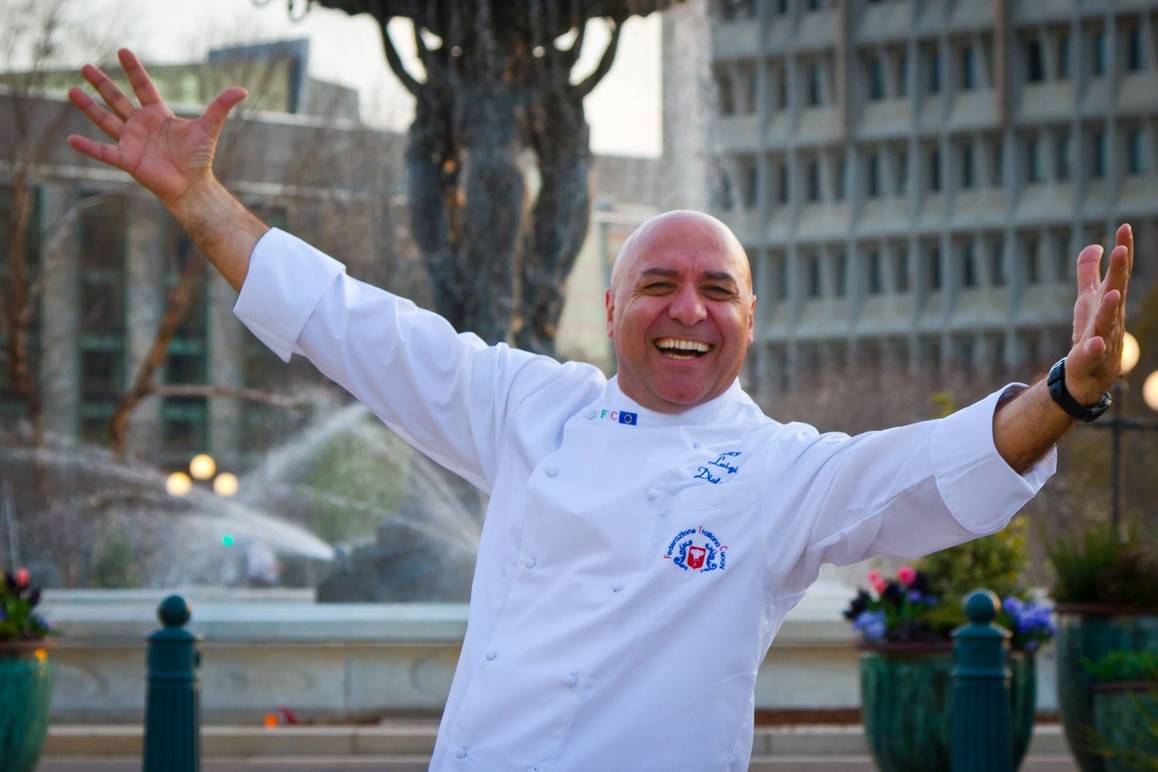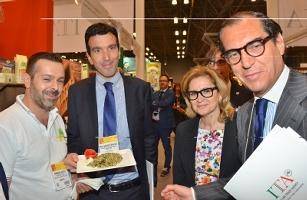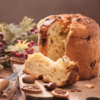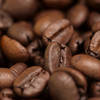Summer Fancy Food: the Italian Sounding Problem Strikes Again
“PARRANO, the cheese from Holland that thinks it’s Italian.” This is quite a catchphrase used to describe a cheese that “artfully captures two of the world’s best known cheeses, Parmigiano Reggiano and Gouda in one, to create a truly unique cheese.”
PARRANO is a full flavored cheese with the nutty flavor of Parmigiano and the creamy texture of a young Gouda that can be sliced, grated and melted… any way you serve it, it does not disappoint. What is disappointing though is that despite the fact that the producers state that the cheese is not Italian if you look at the label you can totally be tricked. First of all the name itself sounds a bit Italian (or even Spanish) and slightly similar to Parmigiano.
Secondly, the logo itself is made of these three colors: red, white and green… the colors of the Italian flag. Then in big letters you see the writing “Originale,” (which in Italian means original) surrounded by other words written in a smaller font: “formaggio,” “gusto,” fresco.” All Italian words.
PARRANO was just presented at the 2014 Summer Fancy Food Show, and it was not the only misleading Italian sounding product that international companies presented to the attendees. The issue of Italian sounding brand names by manufacturers that have nothing to do with Italy has been going on for years and many are fighting against it. First and foremost the Italian Trade Commission (ICE) here represented by the Italian Trade Commissioner in New York, Pier Paolo Celeste.“
The 2014 edition of the Summer Fancy Food Show has proved what commercial data had anticipated: the quantity of food that is Made in Italy imported in the US is in greater demand (+ 8,5% during the first months of 2014 vs 2013). During these wonderful three days of intense work we at the Italian Pavilion have experienced a great inflow of visitors and all of us at ICE are really proud of it, because we work on it all year long,” the Commissioner told i-Italy.
And on the Italian sounding subject he added; “However, we have definitely noticed that there have been plenty of attempts to attract - by using our national colors and Italian names or references - the visitors’ attention on pseudo-Italian products.
This phenomenon, commonly known as the Italian Sounding phenomenon, is stimulating us at ICE to increase all our educational activities in order to instruct consumers on the quality and uniqueness of Italian products and on how to read labels, that, if you know how to read them, can give you all the information on the origin of the product. An educated consumer is a happy consumer.” Indeed ICE is succeeding in educating consumers through seminars, meetings and literature.
“I think that educating the consumer is very important,” chef Luigi Diotaiuti owner of Al Tiramisu restaurant in Washington DC told us, “but I think that it is also important to educate chefs and people in the food trade. The chefs of today seem to be more interested in being on TV or on posting pictures on social media rather than in learning their ingredients. I include myself in this, but I can say that even professionals are superficial and lack some basic knowledge. So knowledge comes first and then I agree that the labels are too misleading. You see an Italian flag or the word Tuscany on the packaging and you immediately think the product is Made in Italy. I think the labels should be designed following some strict rules, similar to the rules producers must follow to make a certain food, like Prosciutto di Parma, so that the consumer can know exactly what he is purchasing. Last, what separates our products from imitations is the quality. Parmigiano Reggiano is made following a method that is centuries old. It cannot be reproduced. It's not a question of 'my food is better than yours,' they're just different. I am proud of my food, and thanks for trying to imitate it but do your own thing and stop misleading people.”
“I remember when I used to come to the US as a tourist, I would always make a trip to the supermarket. How funny it was to see all those Italian names on foods that had nothing to do with Italy! Very funny. Now that I have the honor to represent real Italian products, Italian sounding is no longer funny. It’s a catastrophe. All you need is a map of Italy, an Italian name, and “product of Italy” on the label. And the game is done. Who is going to check anyway? No one. Take a bottle of olive oil. In some (very few) cases, the true origin of the olives is written on the back of the bottle, but you need a magnifying glass to read it,” Beatice Ughi, founder and president of Gustiamo, importer and distributor of authentic, artisanal foods from all regions of Italy, added.
“We strongly believe that fake Italian products are a huge and growing problem. In the USA, “made in Italy” is more attractive than ever before. Italian products are considered cool. They signify a glamorous and elegant lifestyle. Italy, according to Americans, makes food products that are healthy and good for you. If you eat Italian, you are engaging with traditions, family, and culture. “Made in Italy,” in the USA, is more appreciated and sought after than ever before. Italy can be found for sale everywhere in the USA, but at lower and lower prices.”
“We need to protect and defend out products,” Luigi Diotaiuti added, “The French, for example, fought hard to have the right to be the only ones who can produce Champagne. Italy is lucky to have some amazing products whose reputation is being destroyed by fakes. What can we do to protect them?”
“Is there is somebody who is monitoring this? Who should I ask?,” concluded Beatrice Ughi.








































i-Italy
Facebook
Google+
This work may not be reproduced, in whole or in part, without prior written permission.
Questo lavoro non può essere riprodotto, in tutto o in parte, senza permesso scritto.